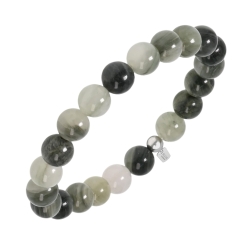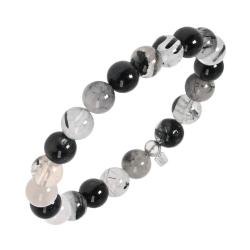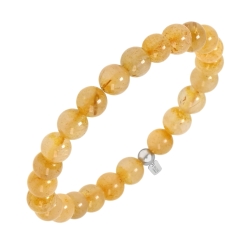Rutile - knowledge base, jewelry
Properties of rutile, physiological effects, zodiac signs and rutile jewelry.





Rutile the most common natural form of titanium dioxide.
Hard, metallically shiny, red or reddish-brown, thin crystals that are often surrounded by other minerals. (But this isn’t a rutile quartz!) Rutile is a mineral found in igneous rocks, but also occurs in fissures, pegmatites, and crystallized limestones. Rutile microscopic needles are found in clays and shales.
Chemical and physical properties of rutile:
Formula:
TiO2 titanium dioxide
Crystal system:
tetragonal
Category:
oxyde mineral
Color:
brown, reddish brown, red, yellow, blue, violet, grass green, greyish black
Streak:
from light red to dark red
Transparency:
opaque, transparent
Cleavage:
good
Fracture:
uneven, conchoidal
Mohs scale hardeness:
6,0 – 6,5
Specific gravity:
4,23 g/cm³
Major metaphysical healing properties attributed to rutile:
For thyroid function, regeneration of damaged tissue, treatment of impotence, infertility, beneficial for the respiratory tract, catarrhal diseases, asthma, expels parasites from the body, straightens the posture, treatment of chronic diseases, exhaustion.
A part of our rutile jewelry offer. Click on the images for more details!
For more jewelry please click here!
Use of rutile
Rutile is an important mineral in the trade. It is used as a dye in the manufacture of porcelain and glass and is sometimes used in the manufacture of certain steels and copper alloys. Rutile is also used as a bead in the jewelry industry. Artificial rutile has a yellowish tinge, a high refractive index and a high dispersion, so it has a brilliance similar to that of a diamond. Synthetic gemstones can be made in a variety of colors by adding appropriate metal oxides.
Occurrence of rutile
Australia, South Africa, Ukraine, Norway and the Alps.








